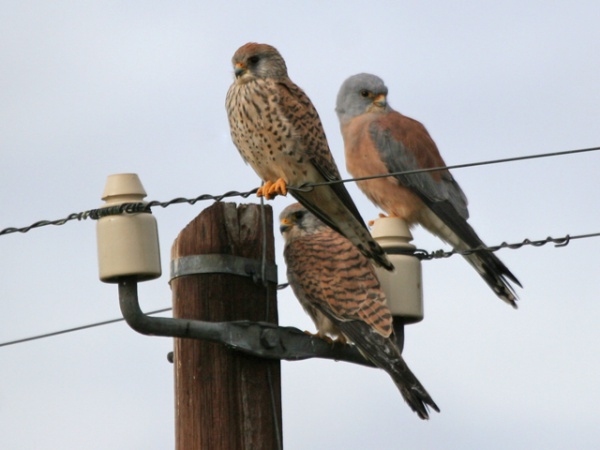Facts About Lesser kestrel
The Lesser Kestrel: A Small but Mighty Falcon
The lesser kestrel is a captivating small falcon that inhabits regions across the Mediterranean, Afghanistan, Central Asia, China, and Mongolia. During the summer, it migrates to these breeding grounds and, as winter approaches, relocates to warmer regions such as Africa, Pakistan, and occasionally India and Iraq. Sadly, this bird is becoming increasingly rare in northern Europe, where its population is in decline.
The name "lesser kestrel" has roots in Late Latin, referring to the bird's talons. The species name honors Johann Friedrich Naumann, a German naturalist who significantly contributed to the field of ornithology.
What Does the Lesser Kestrel Look Like?
This small raptor measures about 27–33 cm in length with a wingspan of 63–72 cm. At first glance, it may resemble the common kestrel, but there are notable differences. The lesser kestrel has shorter wings and a shorter tail. Males feature a grey head and tail, lack dark spots on their backs, and possess grey patches on their wings. Females and juveniles are somewhat paler. If you hear a harsh "chay-chay-chay" call, you may be listening to a lesser kestrel. Unlike other falcons, their talons have a whitish-horn color rather than a dark hue.
Taxonomy: Familial Connections
Despite superficial similarities, the lesser kestrel is not closely related to the common kestrel. DNA studies reveal that it occupies a basal position within the family tree of "true" kestrels. It likely diverged from other kestrels approximately 7 to 3.5 million years ago. Its resemblance to the common kestrel remains somewhat enigmatic but hints at some ancestral connection.
How Does the Lesser Kestrel Live?
The lesser kestrel is smaller and more delicate compared to the common kestrel. Both species may share the same breeding grounds and do compete to some extent. The lesser kestrel's diet primarily consists of insects, small birds, reptiles, and rodents. They nest in colonies but do not build conventional nests; instead, they lay 3–6 eggs in suitable nooks and crannies.
In West Africa, these birds are fond of areas abundant in locusts and grasshoppers. While the lesser kestrel is generally widespread and abundant, earning it a "Least Concern" status from the IUCN, it faces threats from pesticide use, which impacts its insect-heavy diet.

 Central African Republic
Central African Republic